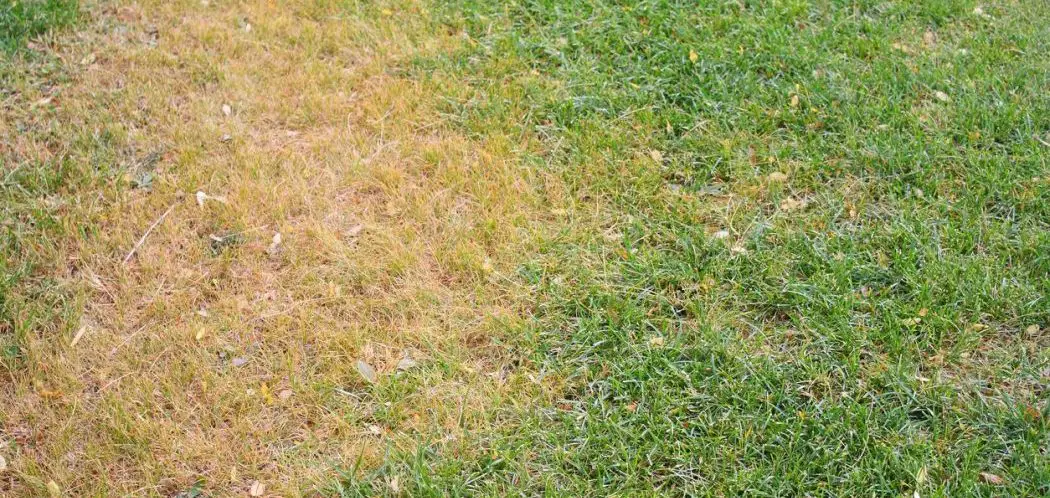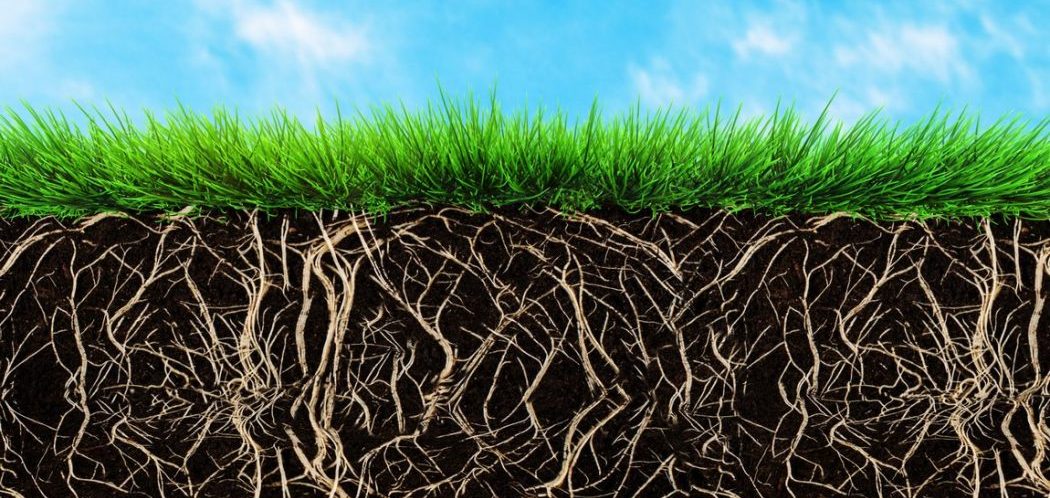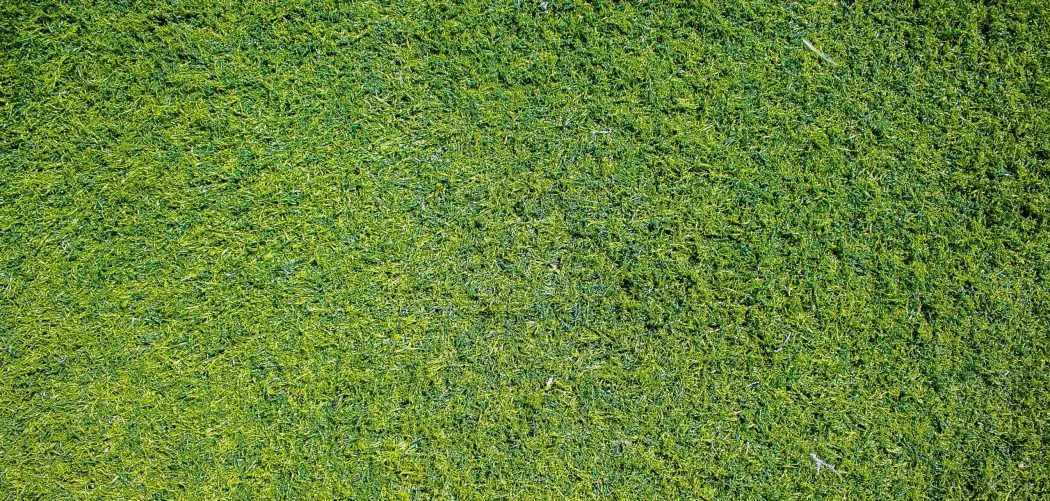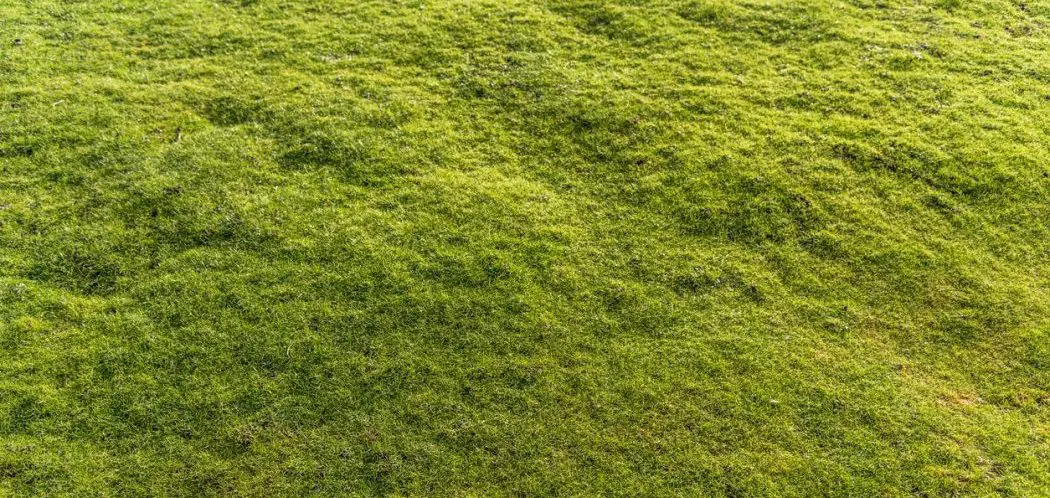Your grass can vary from a deep, dark green, to a yellow or light brown color. On one end of the spectrum, a dark green color means your grass is perfectly healthy and in great condition. Once it starts to turn closer to brown, however, it can be a sign of deterioration.
Your grass’s color is its way of telling you what it really needs. Unfortunately, your grass can’t speak so you’ll have to rely on its varying shades to figure out what it’s missing.
Different shades of green in your grass can be caused by varying amounts of nutrients, changes in sunlight exposure and the amount of water the grass is getting. It is normal for grass to be different shades of green throughout the year as a result of the changing seasons.
What Gives Your Grass a Nice Shade of Green?
Typically, grass, or any other type of plant for that matter, is filled with chlorophyll. Chlorophyll is what makes leaves green and is vital to keeping them alive. Chlorophyll is also used by plants as a way to make food. Therefore, if your grass is green, it’s getting its fill of chlorophyll.

Another Indication of Healthy Grass
Another indication that your grass is healthy would be that when you step on it, it immediately bounces back. When grass is brittle and weak, it will break under the weight of your footsteps.
The thickness of your grass is also a telltale sign that you’re doing a great job in taking care of your lawn. If there aren’t any patches in your lawn that are visible to the naked eye, you have nothing to worry about.
What Do Different Shades of Green Mean?
So why is my grass different shades of green?
This may be a question you find yourself continually asking despite your valiant efforts to get it to be uniform. For starters, you know that your grass is healthy because it’s green. But you’re probably still perplexed by the fact that your lawn seems to range from a light green to a dark green. However, there is a perfectly reasonable explanation for this.
Recently Seeded Grass
Some grass in your lawn may be lighter than other parts because it’s grass that you’ve recently seeded. As a result, their roots haven’t been fully established, which explains why they are so light in color. A light green color could also mean that your soil is lacking in nutrients.
Nitrogen
Nitrogen is the main source of nutrition for many plants, and if your grass isn’t getting enough, it could affect its color. A way to fix this is by spreading fertilizer in those problem areas once spring hits. Be careful not to spread too much though, as it could cause chemical burns on your grass.
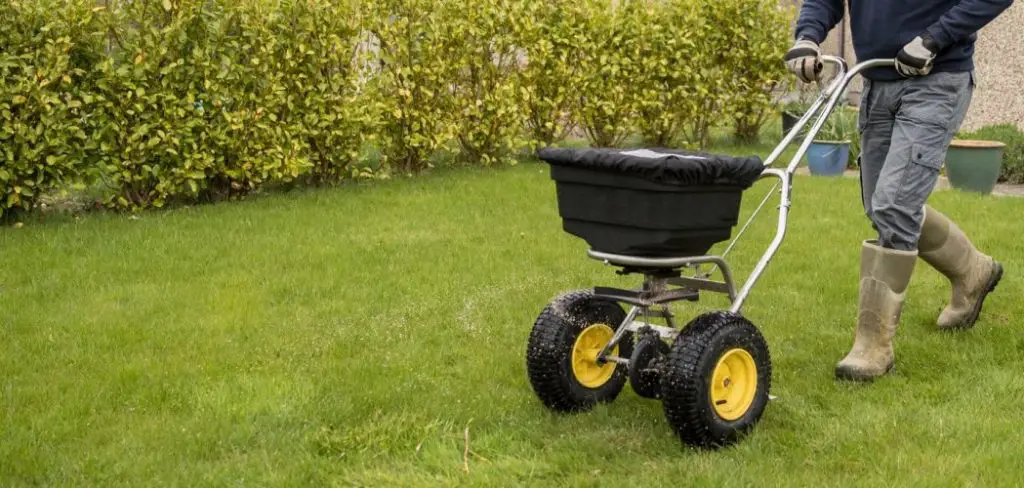
Fairy Rings
Shockingly, bright green grass isn’t always a sign of a healthy lawn. Sometimes, dark green grass can be caused by a fungus known as fairy rings. This type of fungus typically attaches itself to decomposing wood and grass clippings. They then drain your grass of water, causing it to eventually die off. Because of this, it’s important to catch fairy ring fungus as soon as possible.
Type of Grass
Finally, a reason your grass could be different colors may be due to the type of grass you have growing. Perhaps you recently seeded grass in an already existing lawn, and accidentally got the wrong kind of seed. As a result, you’ll end up growing two different types of grass that end up varying in color. This isn’t to say your grass will be unhealthy, but you may have to learn to live with the fact that it will never completely be the same color.
What Does it Mean When My Grass Is Yellow?
Although not the perfect green that you’re used to seeing, yellow grass is still not anything to panic over. At least not yet. If you can get it under control before it spreads, you should be back on track to a healthy lawn in no time.
Excess Nitrogen
If you’ve started noticing patches of yellow in your otherwise green lawn, it might be because your lawn is getting excessive nitrogen.
Although nitrogen, which is found in most fertilizers, is good for your grass, too much of it can cause it to turn yellow. In fact, it can even cause the pH levels of your dirt to change, which will make it harder for you to fix things. Soil is where your grass gets most of its nutrition, and if it’s compromised in any way, you’ll see the effects on your lawn.
Dog Urine
Nitrogen also tends to be present in dog urine, so if you’ve got a canine pal that’s taken to going to the bathroom in one particular part of your yard, it could be the reason for your yellowing grass. A good way to solve this problem is by training your dog to go to the bathroom in other areas of your yard. At least this way the urine won’t be concentrated in just one spot of grass.
To fix an overfertilization mistake, simply continue to water your lawn as often as possible to drain the dirt of the fertilizer. If the area is too far gone however, your only option would be to reseed it or to purchase sod, which can get pricey.
What Does it Mean When My Grass Is Orange?
While it’s unlikely that your entire lawn will turn orange, (unless it’s in seriously bad shape) you may have noticed some patches of grass that have turned orange. So what does this mean for your lawn?
Fungus
Typically, an orange patch of grass means that you have a fungus on your hands. Fittingly, the type of fungus is called rust and grass is more susceptible to this type of fungus when it is lacking in nitrogen.
If you’ve recently had consistent rainfall or have been overwatering your lawn, this can also be a reason for the fungus’s appearance. Overwatering may deplete the grass of nitrogen, thus causing the fungus. Before you start to panic however, rest assured that rust isn’t as serious as you may think it is.
Managing your turf is the first step to nursing your lawn back to health. Continue to water, fertilize, and mow your lawn as often as you normally would and soon you’ll start to see improvements. Remember to be consistent with it.
What Does it Mean When My Grass Is Brown?
If you’ve got brown grass, chances are your lawn is either in dormancy or it’s dead. This doesn’t necessarily mean it’s your fault, and it may in fact have a lot to do with the season you’re in so don’t beat yourself up too hard over it.
It’s very common for lawns to go dormant in winter. Your grass may turn brown which is completely normal. Usually it’s color will return again in the spring time.
You may have also experienced a drought lately or temperatures have been higher than normal. These are all factors that come into play and may be the reason why your grass has started to die.
Weeds
Having weeds in your lawn is a problem that most homeowners have. Unfortunately, weeds are difficult to get rid of on your own and many people turn to lawn care companies to help them get the job done. If you do decide to try to rid yourself of weeds on your own, you can always use an herbicide to keep those weeds from germinating.
Rust
Like we mentioned previously, rust is a common fungus found in grass that discolors and kills it. If you let the problem get worse, it will definitely end up killing your grass.
Chinch Bug
Finally, your grass could be turning brown thanks to a certain type of insect called the chinch bug. These bugs will suck your grass dry and thus cause it to die. To see if this is what’s causing your grass problems, simply pull back some grass and see if you can find the critters lurking beneath the surface. You can drown them out by overwatering your grass or using insecticide.
Again, if the problem is too far gone, you may be left with little options but to sod or reseed your yard.
What Does it Mean If My Grass Is Purple?
No, your lawn wasn’t spray painted to look that way by a neighborhood prankster. A purple lawn can occur when it’s between the stages of turning from green to brown. Grass tends to turn purple when it’s being exposed to too much heat and not enough shade.
To solve this problem or keep it from getting worse, all you need to do is continuously water your lawn and make sure your grass stays hydrated.
What’s Lurking Underneath Your Grass Could Be the Culprit
If you have purchased a house that was recently built and are already having lawn problems, there’s a good reason why. Oftentimes, rubble gets left behind when construction is done, and grass gets planted over it. While it won’t affect the grass immediately, rubble will eventually start to have a negative effect on your yard.
The rubble can cause your grass to dehydrate because it’s blocking any water that it gets. Not only that, but it can also cause an imbalance in the roots. You can always find out if this is the problem by digging up a piece of lawn and checking it for any rubble underneath.
To fix this problem, simply remove as much of the rubble as you possibly can. If enough damage has been done, you may have to reseed.
Your Usual Path May Be Killing Your Grass
You might not want to admit it, but you may be the reason your grass is turning different shades or even dying out. If you find yourself constantly doing yoga in one specific spot in your yard, or you take the same path every day to walk your dog, you may be wearing down your grass.
Not only are you crushing the grass under the weight of your foot, but you are also suppressing it from growing the way it should be. This is a common reason for your grass problems, but fortunately there are some solutions.
The most obvious solution is to stop walking or sitting on whatever parts of the grass you’ve noticed has wear and tear. If it’s not too badly deteriorated, chances are it can grow back successfully.
The next thing you can do is create air pockets in the soil by turning it with a pitchfork or garden hoe. Doing this will help the roots regrow and get more air. Finally, if you simply can’t stop taking the path you normally take, you can always add steps to it.
Could Weeds Be Causing Different Shades of Green?
Weeds are the most common reason for lawn deterioration. Weeds tend to be the bullies of nature and will suppress your grass and keep it from growing as healthy as it normally would. They deprive your lawn of air, water, and nutrients, and not catching them in time will not end well for your lawn.
A good way to get rid of weeds without also hurting your grass (aside from pulling them out yourself) is by applying a mixture of general weed and feed. If you do this, however, make sure you end up applying it to every square inch of your lawn and not just the affected areas. This way, your grass will grow evenly and of the same color.
I use this turf builder by Scotts (link to Amazon). It helps to feed the grass to help it grow thick and crowd out future weeds.
The best time of the year to apply this mixture is during autumn or spring as the grass is still growing during this time.
How to Properly Take Care of Your Grass to Avoid Varying Shades
So now that you know all the problems that could be causing your grass to turn different colors, it’s important to know how to prevent this from happening in the future. Taking good care of your lawn is the first step in making sure your grass is actually greener than the other side.
Don’t Over Fertilize
One of the first things you want to do is make sure you’re fertilizing your grass enough, but not too much. You also want to make sure you’re applying it evenly. If not, your grass will end up growing completely differently. It’s a delicate balance that not everyone can handle. You can always hire a lawn company to do this for you if you’re not feeling extra confident about doing it yourself.
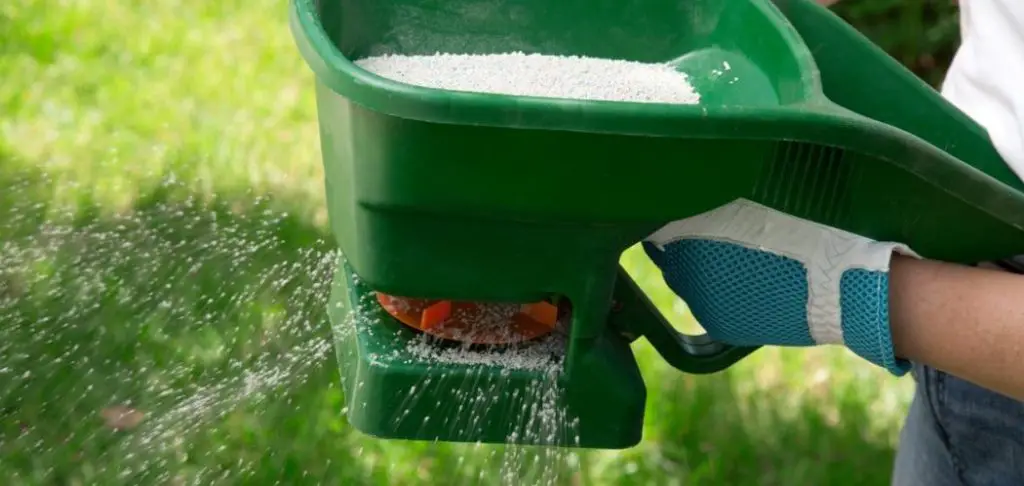
Next up, you should always watch out for fertilizer burns, which is what happens when you over fertilize your grass. This will cause chemical burns and will kill off your grass before you know it. You can easily tell when a grass has chemical burns when it’s not mowed, so if you suspect this of being a problem in your yard, hold off from mowing your lawn until you can find out for certain.
Water Appropriately
Make sure you’re also keeping an eye on the amount of water your grass gets. If it rained the day before, you won’t need to turn on your sprinklers or you risk overwatering your grass. Of course, you also don’t want to do the opposite and underwater your grass. You can usually tell if you’re underwatering your lawn by checking to see how brittle your grass is.
Remove Moss
Another thing you want to look out for is moss that may be growing beneath your grass. Like weeds, moss tends to suppress grass growth thus killing it off before it has a chance to reach maturity. Moss is another one of those things you may need a professional for.
To remove moss, you will want to use a moss killer to loosen up the moss from underneath the lawn. Then, it should be much easier to manually remove, whether you’re using a rake or your hands.
I use this one (link to Amazon). It kills the moss and helps to keep the grass green without harming it.
In Summary
People pride themselves in their lawns. So much so that many neighborhoods have made it a habit to host contests for the best lawn in the neighborhood. Those contest winners, however, didn’t create a perfect lawn overnight. They worked hard at it and maintained it to perfection, so why wouldn’t they deserve recognition?
In summation, lawn care is no simple feat, but it can be extremely rewarding. So long as you treat it with care from the very beginning, you’ll always be rewarded with a bright green lawn every time you open your front door.

